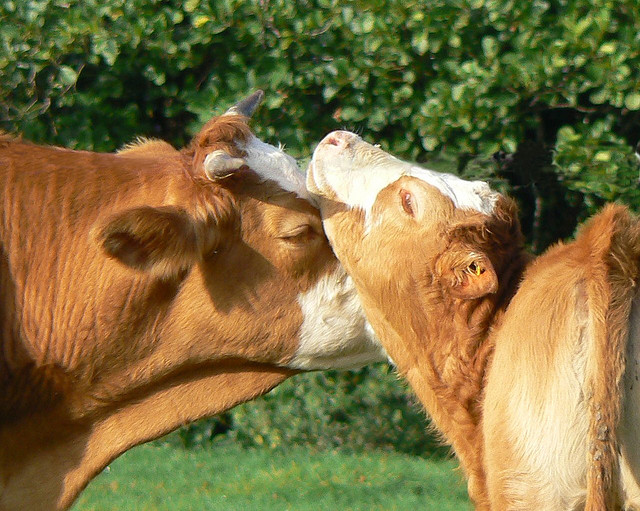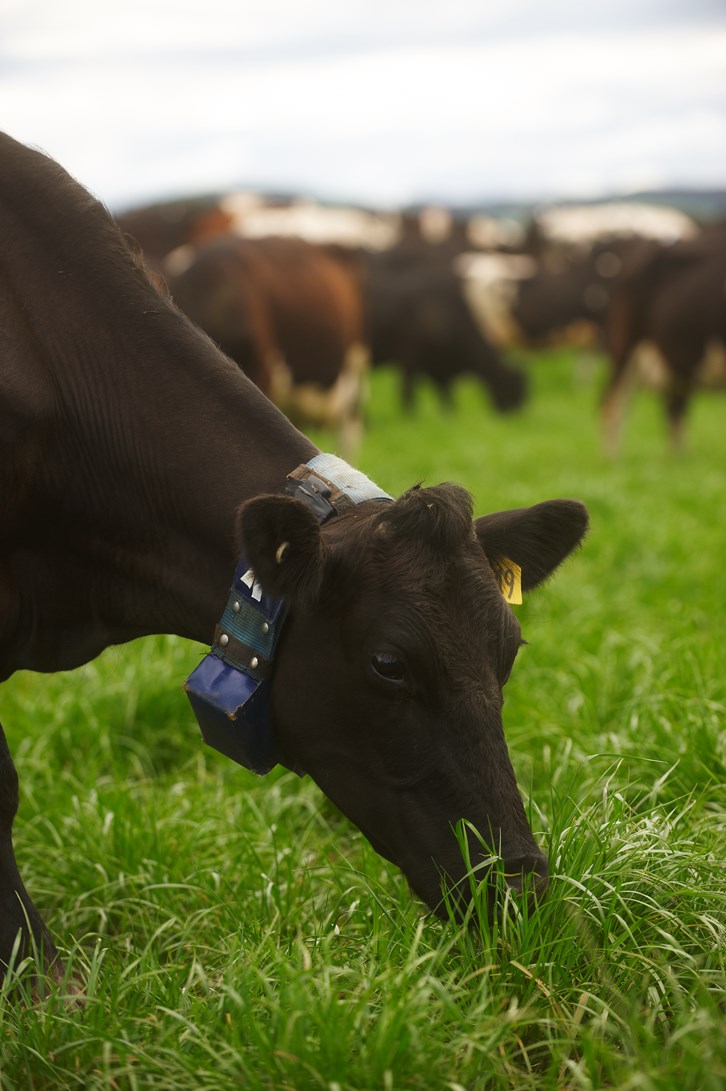Unfortunately cows can't swipe left or right, so we've helped design a collar that can tell when they're in the mooood for love

Bull wants a wife. Image credit: orangebrompton, Flickr.
Have you herd? We’ve worked out a way to tell when Daisy’s in the moood.
Our scientists have been working with UTAS as part of the Sense-T program, to develop a smart collar that monitors the behaviour of dairy cows.
What is so extraordinary about the secret lives of cows, you ask? Well, quite a lot it turns out. Understanding a dairy cow’s eating habits, knowing with certainty when they’re in heat, and how they’re feeling generally, impacts a farmer’s management practices and can be the difference between a farm’s profit or loss.
A cow only produces milk after she has had her first calf, and she needs to be pregnant at least once a year in order to keep producing milk. Timely detection of oestrus events (when a cow is in heat) is crucial to ensuring successful artificial insemination and a continuing milk supply. It is recommended that artificial insemination takes place within 4-12 hours of an oestrus event, but the majority of oestrus events occur during the night when farmers are asleep and can be missed the following morning.

Data collected by Daisy’s collar can tell when she’s in the mood for love.
Our hi-tech collar has been designed to monitor and predict cattle behaviour using highly accurate machine learning algorithms. Data collected from accelerometers (measures accelerations in 3 dimensions) and magnetometers (measures orientation – head down, up or tilted etc) identifies behaviours and divides them into ten classifications including grazing, ruminating, resting, searching, walking and standing. It is believed these behavioural classifications (accurate to 95%) will also be able to detect oestrus events, so if a cow is feeling frisky a farmer could be alerted via SMS that it’s time for insemination.
There are a number of heat-detecting cow collars currently on the market, but our collar’s unique behaviour classification capability means it can be used to target a wide range of applications. One example is identifying individual cow feeding patterns in order to optimise grain distribution, saving farmers on grain costs. Supplementary grain currently makes up about 30% of a dairy farm’s expenditure.
Sick cows also impact a farm’s profit. Trials will begin shortly to recognise precursor behaviour patterns for illnesses like mastitis and lameness so they can be caught early.
The Sense-T program is all about combining collected data and using it for purposes it wasn’t originally intended. The cow collar behavioural data, combined with soil moisture data for example can be used to estimate water quality in local rivers. If you know where the cows have been and you know the soil is wet and there’s been a rainfall event, then you might say there’s a pretty good chance that the nearby river is carrying a high faecal load and that could directly impact on oyster farmers downstream…
Sense-T is a partnership between the University of Tasmania, CSIRO, the Tasmanian Government and IBM.


18th June 2014 at 5:27 pm
Cow wants a wife? who wrote this caption? Must have been some University trained academic. Money misspent I think.
The ad in the Lonely Hearts Column should read, ” Cow wants Bull.” Someone better be shown what the difference is or the person might be Gay & doesn’t like Bulls. 🙂